
- Silkworm is beneficial to us as we extract silk from its cocoon.
- In Nepal, two types of silkworm are reared for the commercial production of raw silk.
- Eri silkworm (Attacus ricini) which feeds on castor leaves.

- Seri silkworm (Bombyx mori) which feeds on mulberry leaves.
External morphology of silk moth:
- An adult silk moth is strongly built, about 2.5 cm long and is creamy white in color.
- The body is divided into head, thorax and abdomen.
- The head bears a pair of compound eyes and a pair of feathery antennae.
- The proboscis is reduced, so they don’t feed.
- The thorax bears three pairs of legs and two pairs of wings.
- Minute powdery scales cover the entire body.
- Male and female are distinct where the female is bigger than the male with distended body.
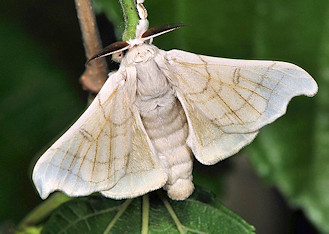
Life cycle:
- Sexes are separate. The adult moths seldom feed and are concerned with reproduction only.
- Male and female copulate in tail to tail position and the fertilization is internal.
- It completes its life cycle in about 45 days. Male dies soon after mating and female dies after laying eggs.
- Like any other insect, its life cycle completes in four stages, i.e. egg, larva, pupa and adult.

Egg:
- Female lays about 300 small, white, round (pin head shaped) eggs in cluster on mulberry leaves and she dies.
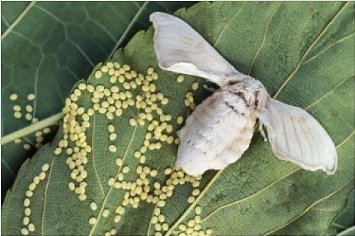
- In cold, the eggs don’t hatch for a long time and the increase in temperature causes them to hatch faster.
- In sericulture, the eggs are collected and stored in a cold place when the food (mulberry leaves) are not abundant to feed the larvae.
- In the early spring, with the enough supply of food, the eggs are hatched inside the incubator at the temperature of 18-250
- Eggs hatch into larvae within 10-12 days.
Larva:
- The newly hatched caterpillar is 6mm long, brownish in color and moves in a characteristic looping manner.
- The body is divided into head, thorax and abdomen.
- They are actively voracious and feed on mulberry leaves for 25-32 days.
- They grow very fast and undergo four moltings (changing the skin) to change into different instars.
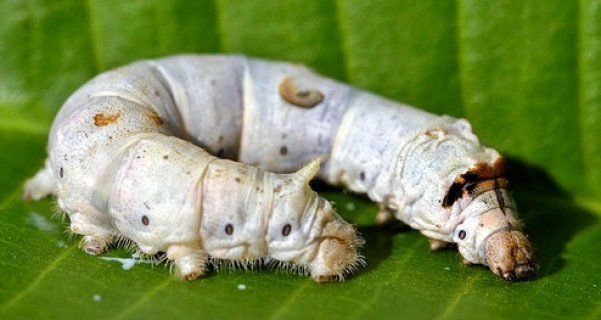
* Instar is the larval stage between two successive moltings in the life cycle of any insect. In silkworm’s life cycle, there are 5 instars of larva.
- After each molting, the larva neither feeds nor moves for the next 20-24 hours.
- The fifth instar larva is fully grown and consists of three pairs of jointed legs and five pairs of unjointed stumpy prolegs.
- It has spiracles on either lateral side of the abdomen meant for gaseous exchange.
- It also develops a pair of salivary glands and starts secreting the sticky fluid which turns into fine, long and solid thread of silk after coming in contact with air.
- The thread becomes wrapped around its body forming a pupal case known as the cocoon.
- The larval stage lasts for 25-32 days.
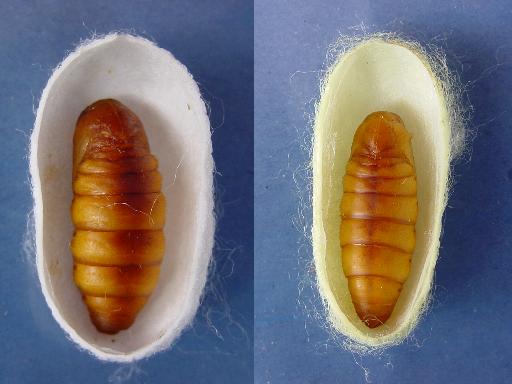
Pupa:
- The larva changes into a pupa within a cocoon, which is the third stage in the life cycle.
- Pupa is completely inactive. It neither feeds nor moves and if permitted to live, it undergoes active metamorphosis and becomes an adult in about 10-12 days.
- The adult secretes an alkaline fluid to moisten one end of the cocoon and emerges through it and the long silk thread is broken into many short fragments.
- To save the silk, the cocoons are kept in hot water or hot air to kill the pupae inside.
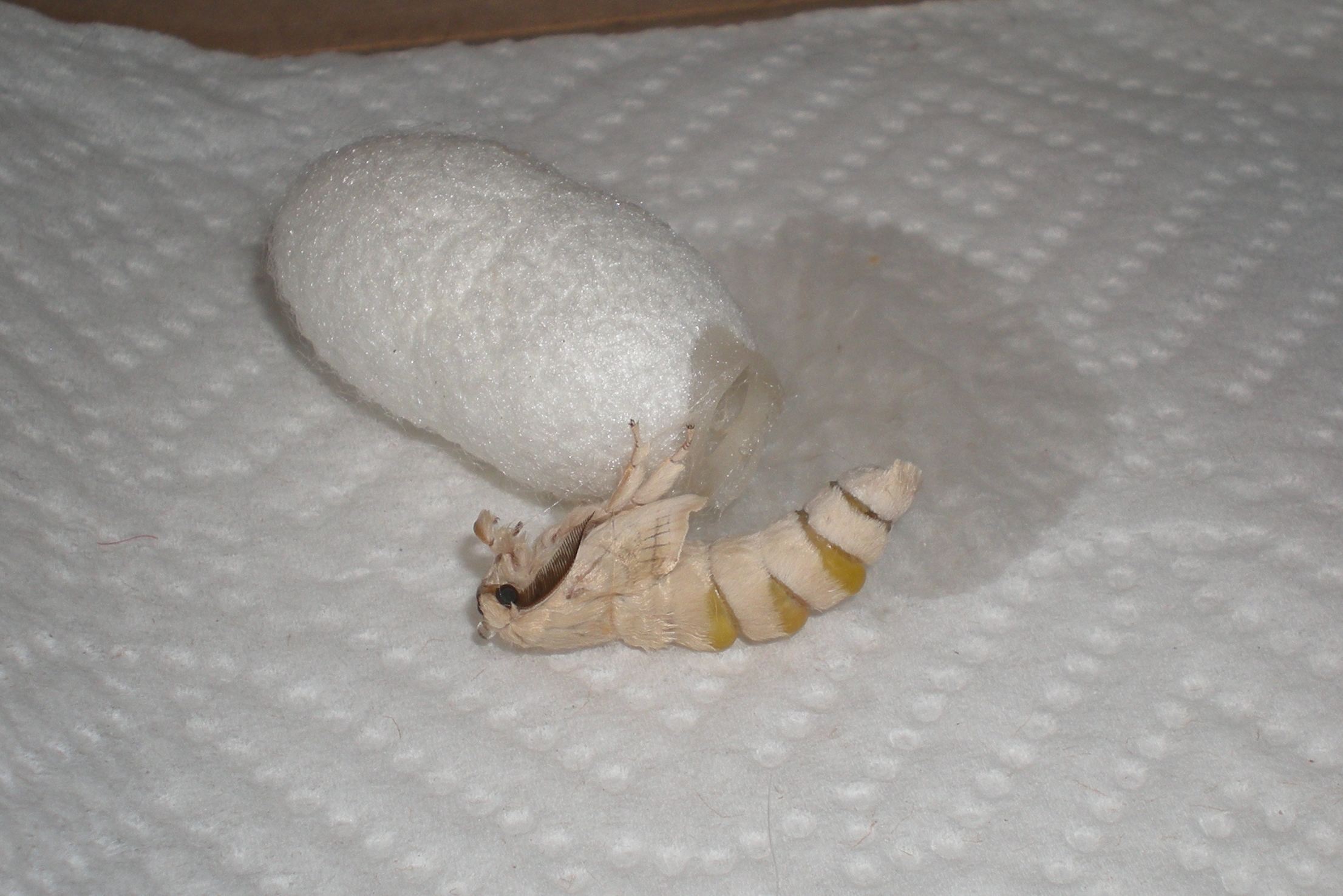
Adult:
- Few pupae with cocoon are selected for further development into adults. These moths are kept to lay next batch of eggs.
- The adult coming out of the cocoon has wet wings and hence cannot fly. It flies after its wings are completely dry.
- Adults survive for 5-7 days during which they mate, produce eggs and continue the generation.
Properties of silk:
- One cocoon yields about 1000 feet of silk thread. It is unwound from the cocoons and reeled into threads of commercial silk.
- It is a natural fiber which is soft, shiny, strong and durable.
- It is highly elastic and has long threads.
- It easily absorbs water.
- It is extremely light in weight and warmer than cotton and can be easily dyed and ironed.
Hence, silk is also called the “Queen of fibers”.
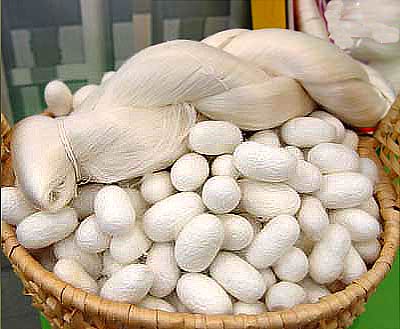
Uses of silk:
- It is used in the manufacture of woven materials and knitted fabrics (men’s and women’s fashionable clothing).
- It is used in fishing lines and sieves of flour mills.
- It is used in the insulation coil for telephone, wireless receivers and tyres of racing cars.
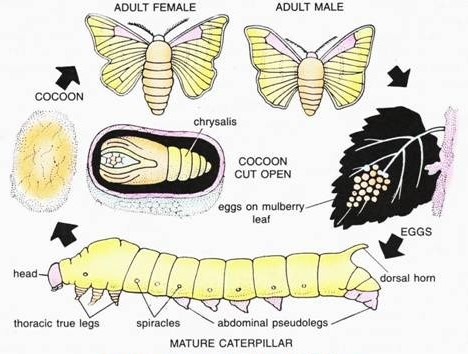
Daju babbal xa note chai